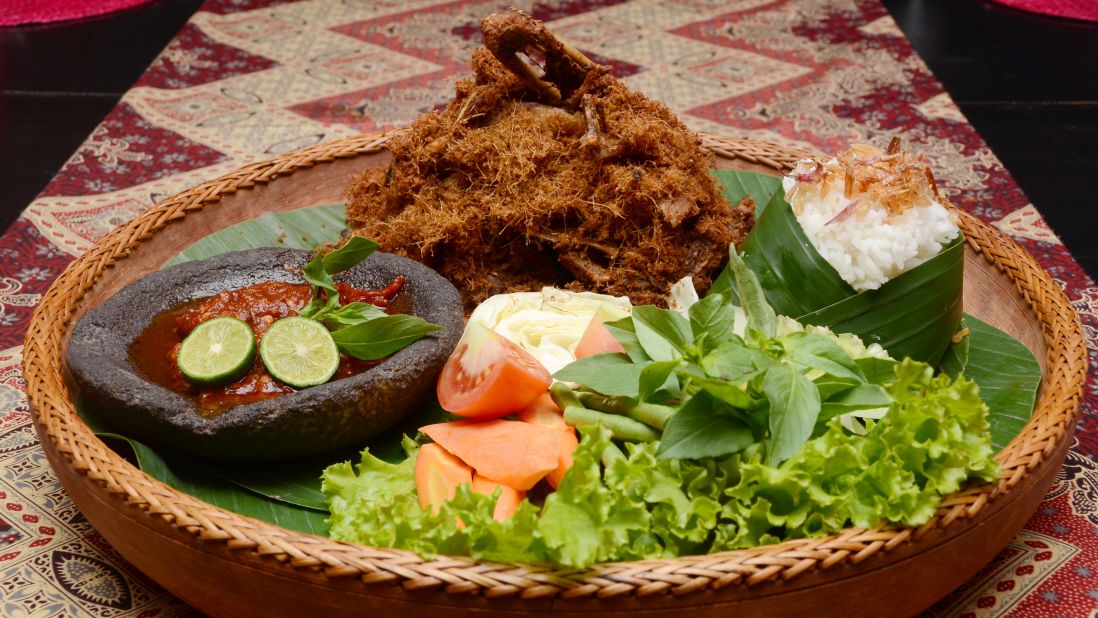Indonesian cuisine is a culinary treasure trove, characterized by its bold flavors, aromatic spices, and diverse regional specialties. From the bustling streets of Jakarta to the tranquil villages of Bali, the food of Indonesia offers a tantalizing journey for the taste buds.

The Influence of Spice Trade: Aromatic Infusions
Indonesian cuisine is heavily influenced by centuries of spice trade, which introduced a plethora of exotic herbs and spices to the archipelago. Fragrant ingredients such as lemongrass, galangal, and kaffir lime leaves are used to infuse dishes with layers of complex flavors, creating a sensory experience like no other.
Regional Diversity: Culinary Gems from Across the Archipelago
With over 17,000 islands, Indonesia boasts a rich tapestry of regional cuisines, each with its own unique specialties and culinary traditions. From the fiery curries of Sumatra to the seafood-rich dishes of Sulawesi, exploring the diverse flavors of Indonesian cuisine is a journey of discovery.
Nasi Goreng: The King of Indonesian Street Food
No exploration of Indonesian cuisine would be complete without mentioning nasi goreng, the beloved fried rice dish that reigns supreme as the king of street food. Made with aromatic rice stir-fried with kecap manis (sweet soy sauce), shallots, garlic, and chili, nasi goreng is often topped with a fried egg and served with a side of pickles or crackers.
Rendang: A Culinary Masterpiece from West Sumatra
Hailing from the Minangkabau region of West Sumatra, rendang is a slow-cooked beef dish simmered in a rich and fragrant coconut milk-based sauce. Infused with a medley of spices such as cinnamon, cardamom, and star anise, rendang boasts a depth of flavor that intensifies with each tender bite.
Sate: Skewered Delights from Across the Archipelago
Sate, or satay, is a popular Indonesian dish consisting of skewered and grilled meats, typically served with a side of peanut sauce. Variations of sate can be found across the archipelago, with each region putting its own unique spin on the dish. Whether it’s chicken sate from Java or seafood sate from Bali, these skewered delights are a favorite among locals and visitors alike.
Gado-Gado: A Refreshing Salad with a Spicy Kick
Gado-gado is a traditional Indonesian salad made with a colorful array of boiled vegetables, tofu, and hard-boiled eggs, all dressed in a creamy peanut sauce. Topped with crispy fried shallots and served with a side of spicy sambal, gado-gado offers a refreshing combination of flavors and textures that is both satisfying and nutritious.
Tempeh: A Nutritious Plant-Based Protein
Tempeh, a fermented soybean product, is a staple ingredient in Indonesian cuisine and a popular source of plant-based protein. With its nutty flavor and firm texture, tempeh is often used in stir-fries, curries, and grilled dishes, offering a nutritious and versatile alternative to meat.
Conclusion: Embark on a Culinary Adventure
In conclusion, Indonesian cuisine is a feast for the senses, offering a rich tapestry of flavors, aromas, and textures that celebrate the nation’s cultural diversity and culinary heritage. Whether you’re savoring the fiery spices of Padang cuisine or indulging in the tropical delights of Balinese fare, exploring the gastronomic wonders of Indonesia is an adventure worth undertaking. So pack your bags and prepare your taste buds for a culinary journey unlike any other.